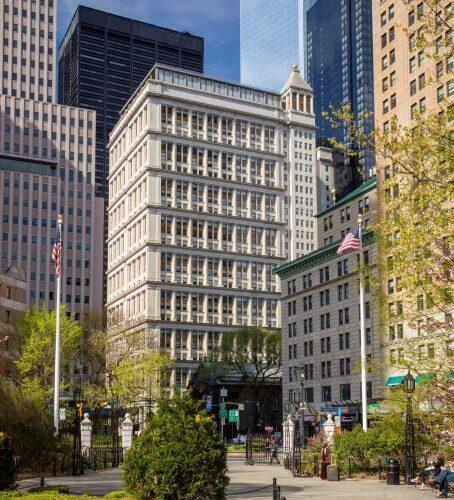
Jay Sugarman, Safehold Chairman and CEO
Over the past few decades, real estate finance and investment markets have become much more efficient – except in one big area. In an investment world that demands efficient use of capital, why are building owners that are targeting a return of 15 percent or more using their capital to own the underlying land, which returns something closer to three percent? The answer is they shouldn’t be, especially when that land comprises more than a third of their overall investment.
Enter the ground lease.
Historically, ground leases were structured in favor of the landowner, often including one-sided provisions and ambiguous terms that created significant future uncertainty. Older ground leases often impaired the owner’s ability to leverage a building and adversely impacted the overall value when the time came to sell. These impediments made ground leases a challenging source of capital and, as a result, they fell out of favor with sophisticated real estate investors.
The problem was clear: nobody had focused on creating a standardized, leasehold-friendly, value-enhancing ground lease structure adapted to work seamlessly with the modern finance and investment markets.
That changed in 2017 when Safehold pioneered what is now known as the modern ground lease industry.
A new generation of ground leases
Safehold set out to eliminate value-destroying provisions from the ground lease, most notably fair market value resets, an innovation decades overdue. Old ground leases had provisions that allowed the landowner to revalue and raise the rent, usually to the detriment of the leaseholder. Safehold’s structure also removes unnecessary and restrictive covenants that impair the leaseholder’s ability to execute their business plan, such as requiring permission from the landlord when they want to upgrade or sell their building.
 Modern ground leases help building owners reduce equity requirements and achieve higher returns with less maturity risk and significant tax advantages, untethered by the land beneath their asset.
Modern ground leases help building owners reduce equity requirements and achieve higher returns with less maturity risk and significant tax advantages, untethered by the land beneath their asset.
“We started by making sure this process worked with the leasehold lending market, sizing our ground leases appropriately, pricing them as low as possible, structuring them in the clearest and simplest way,” explains Jay Sugarman, Safehold’s Chairman and CEO. “When you do those three things, both the leasehold financing market and the future buyer market suddenly take notice and start seeing that this is actually very attractive capital. You can own the building without having to dilute your returns by effectively owning a much lower return, passive land position.”
Safehold’s reinvented ground lease structure has become a tool that commercial real estate owners, operators and developers are increasingly leveraging at every phase of an asset’s life cycle: when assets are bought, sold, refinanced or at initial development.
Liquidity
Addressing the ability to resell assets on a ground lease has been a common theme in Safehold’s market education process.
“A properly structured, properly priced, properly sized modern ground lease not only helps you today, it allows that asset to trade most efficiently in the future, while not impairing your ability to get leverage on the building or sell the asset at a tight cap rate,” says Sugarman.
We know from our 30 years of experience in the commercial real estate world that if you can’t underwrite it, you’re probably going to take a very conservative viewpoint. So, we stripped out all the provisions that made underwriting difficult in the future. When you make underwriting simple, markets can get very efficient and pricing can become optimal.
Unlocking embedded value
The following example compares a fee simple capital stack with a Safehold ground lease for a building with a $100m purchase price, highlighting enhanced cash-on-cash yields and IRRs with less equity required when owners bifurcate their property.

Putting the customer first
Along with standardizing the ground lease and removing its value-destroying elements, introducing a customer-oriented approach was one of the defining innovations of the modern ground lease industry.
“We’re always trying to understand what our customer’s needs are and that has never been done before in the ground lease space,” says Sugarman. “We’re creating new ground leases for customers because it is a better solution. It is a better alternative to maximize value and reduce their risk. The more deals we do, the better we get at the business, the more it benefits our customers. We’re in this virtuous circle right now.
“We have been building the foundation brick by brick. On the financial side, getting to investment-grade ratings was a big, important milestone. It’s going to allow us to serve our customers faster with even lower cost of capital to be even more flexible. We’ve also built a terrific team of industry experts who work closely with our customers to share the latest knowledge about how ground leases can work best in their capital structures. We think that’s a material advantage going forward.
“The bottom line for building owners is, Safehold can help you make more money with less risk and help you be much more efficient with your capital. If your IRR goes up and your risk profile goes down, boy, that’s a compelling argument.
Momentum breeds success
Safehold now has more than 50 leasehold lenders comfortable with its structure. Over half of the company’s tenants across a $4.5 billion portfolio have become repeat customers, evidence the industry is increasingly grasping the powerful competitive advantage a modern ground lease provides.
“Much like some other fast-growing businesses, there are network effects,” Sugarman explains. “The more people who know you, the more credibility you have with leasehold lenders, the more high-quality customers, the more markets you’re in – they all feed off each other. The head start we have with all these unique attributes sets us up very well to continue to penetrate the market in a way that I think others will find very difficult to replicate.”
“We think others will find some niches that don’t make as much sense for us to play in. We’re really trying to be the lowest cost, longest term, most efficient capital provider. And we think being the biggest, having the lowest cost structure, and being able to provide the lowest cost capital is ultimately what customers want.”
Looking ahead
Nearly five years after sparking a revolution in commercial real estate ownership, Sugarman believes the future is bright for Safehold and the company’s forward-thinking customers.
“When we created this business, we saw the potential to build something big. And here we are, approaching $5 billion in ground leases. It’s been a very good start, but we feel like we’ve really just begun executing on our potential. We’ve built some real competitive moats and real competitive advantages. I don’t see any reason why we can’t continue to be the dominant player in the industry and continue to expand the market for modern ground leases.”
To learn more about Safehold or connect with an originator, click here.

